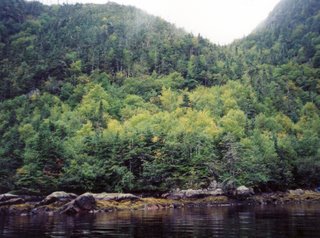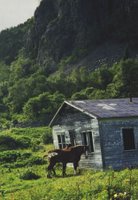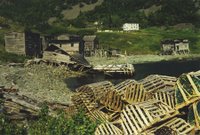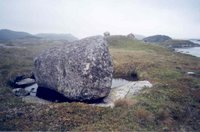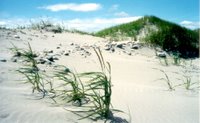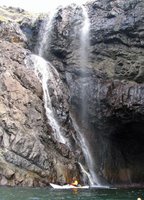
 waterfall & cave; cave (photos : Neil Burgess)
waterfall & cave; cave (photos : Neil Burgess)
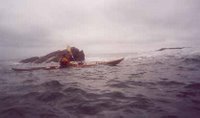 waterfall; a swell time (photos: Alison Dyer)
waterfall; a swell time (photos: Alison Dyer) another cave (photo: Neil Burgess)
another cave (photo: Neil Burgess)
 a 3rd cave, a 4th cave! (photos: Alison Dyer)
a 3rd cave, a 4th cave! (photos: Alison Dyer)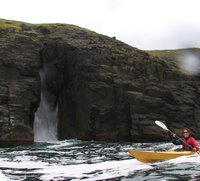
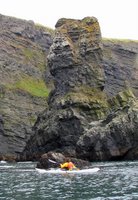
 boomer; swell play (photos: N.Burgess)
boomer; swell play (photos: N.Burgess)
alison before the stack (photo: Neil Burgess)
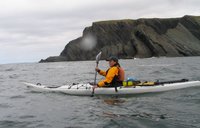 starting out (photo: Neil Burgess)
starting out (photo: Neil Burgess)
For more images, see kayak the rock (go to gallery, click on Neil's St. Vincent's images)Paddled around Cape English in St. Mary’s Bay, Newfoundland, this past Sunday. Opposite the legendary Cape St. Mary’s. A metre or so of swell with some rebound going out but after rounding the cape, the magic began.
There was an Easter Island quality to the monumental cliffs, steeply dipping beds eroded in large statuesque stacks. (Pat made reference to the Lord of the Rings set.) A huge shining guano rock pulsed out a squadron of elegant cormorants. Enticing rock gardens rose and fell several feet and provided lots of fun. Boomers, blowholes and spouts animated the entire cliffscape. At one, we knew we were at the door of the dragon. Sucking in the swell and spouting out a cloud of spray in a deep sonorous tone. Not far away, another wall revealed an enormous atrium, steeply sided and narrowing toward a dark square cave that seem to go on forever. Pat had a bit of a scare when, exploring the inside, a good swell rumbled down the narrow passage and caught him in the cave.
Outside again, we scared a herd of sunning seals who slipped from their rocks into the water. An osprey glided over the bright green meadow cliff tops. We all agreed it reminded us of the coast of Ireland. Farther on, we almost bumped into a docile sun fish.
This paddle – from its surf launch at St. Vincent’s, to its millpond conclusion at St. Mary’s – was a dream. Pat said it rivaled Chance Cove, and Neil compared it to Little Passage on the south coast. Debbie had a coast to coast grin and Isabelle couldn't get enough play around the rocks. Neither Easter Island, New Zealand, or Ireland, we just found Paradise.

